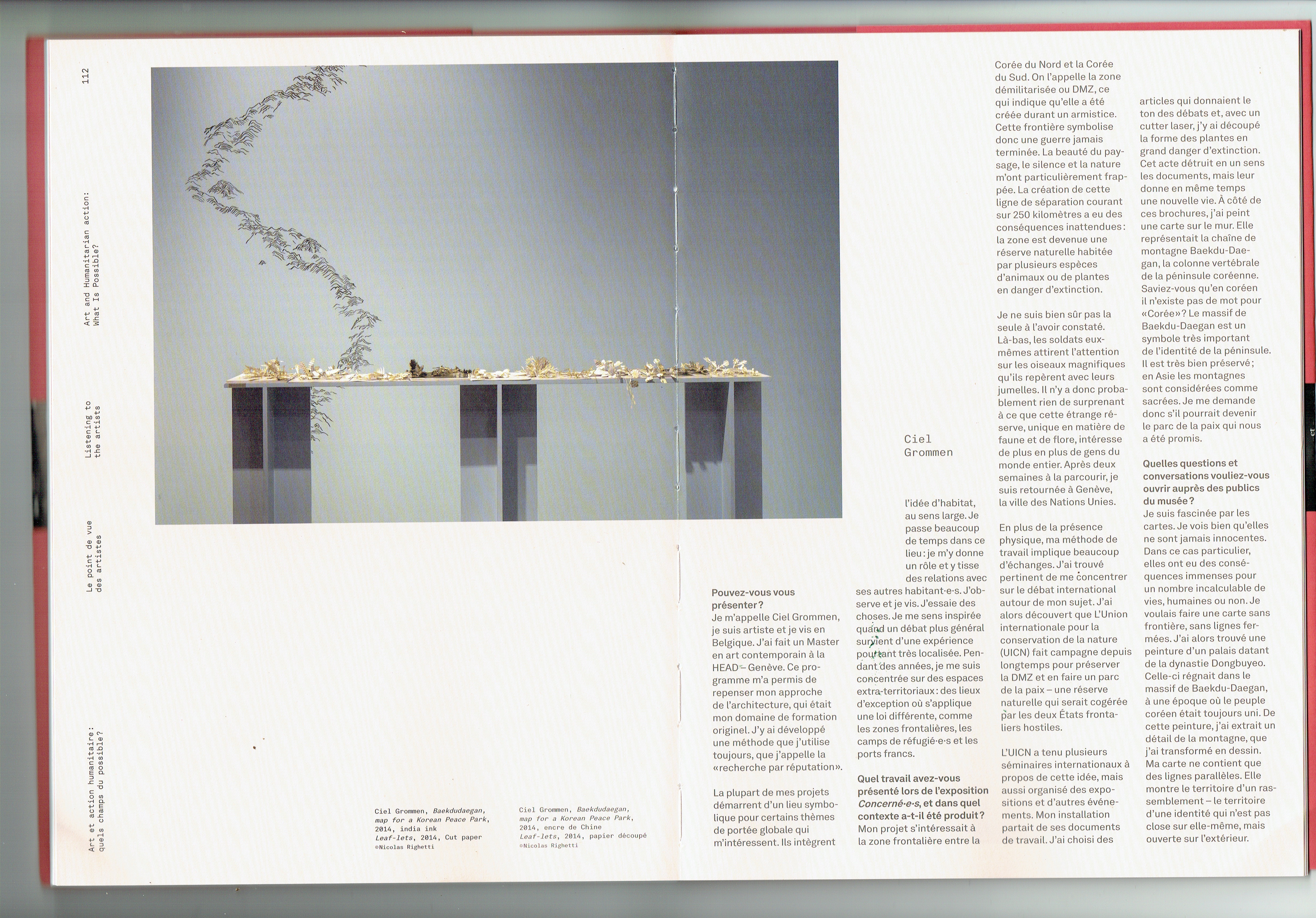A Korean Piece Park
Since 1953, the Korean Peninsula is divided into North and South by a particular border. This border takes the form of a 4 km wide strip across the peninsula and is called the ‘demilitarized zone’. Along both sides of the line, large numbers of troops are stationed to defend their nation against them that once have been their brothers, but are now part of a hostile-other system.
Except for a few touristic incursions and patrolling soldiers, the area has been a deadly place for humans. This isolation along the 249 km length of the DMZ has created an involuntary nature reserve inhabited by several endangered animals and plant species. Unsurprisingly, this unique wildlife refuge is gaining interest from all over the world.
Inspired by other border regions and encouraged by international nature organizations, the South Korean government started to elaborate a plan to turn the DMZ into a transnational park for peace. Only ... up to now, they couldn’t overcome North Korea’s rejection that the park would exploit ‘the pain of national division’.
I took this controversial idea as a starting point for my research. I encountered the massive administrative body that lies behind this physical border region and that envisions its possible transformations.
Leaf-lets presents a reflection, which literally started from found administrative documents: reports, recommendations, and speeches; a diversity in fonts, titles, organizations—but at the end all presented on the same A4-format — a lot of paper. By physically cutting these documents, it becomes impossible to consult their very content. Or is the content rather rising out of the paper? The traces left in the documents remind us of the negative of a herbarium: a DMZ herbarium. Plants — settled — in paper.
With Baegdudaegan, a map for a Korean Peace Park, I propose an alternative territory as a “transnational territory for peace and unification”. It does not cover the DMZ, but the Baekdudaegan mountain range running down the entire length of the Korean Peninsula.The drawing style refers to the famous calligraphic of the Joseong dynasty, the last dynasty of the united Korean people with ruins of the former capital in the actual DMZ. Parallel lines collaborate into mountains, without ever closing. From afar, the map appears as a symbol, almost an identity, and a plea for a simple idea: something that can become, something that already is.


Leaflets, as presented in Territories of Assembly exhibition curated by Markus Miessen in Artsonje Art Centre Seoul, 2014

Interview in French, as published in Art and Humanitarian Action: What Is Possible?, book edited by the International Red Cross and Red Crescent Museum after an online symposium with the same title in 2021 and an exhibition titled Concerned, 30 Artists on Humanitarian Issues in 2020, Geneva.